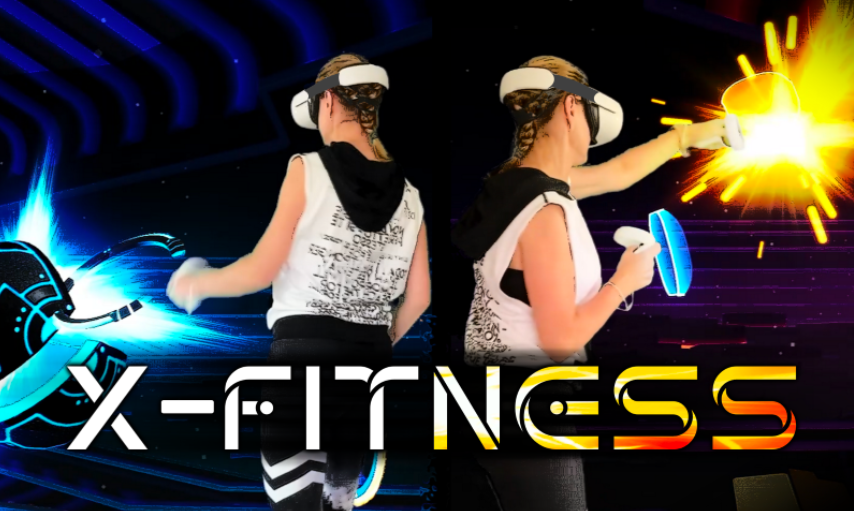In an era where technology and wellness intersect, a new player has emerged: vr fitness. This innovative approach to exercise is not just a fleeting trend; it represents a significant shift in how we view and engage in physical activity. By leveraging VR’s immersive and interactive capabilities, workouts are transformed into engaging, fun, and effective fitness sessions.
The Evolution of VR Fitness
VR fitness combines the immersive experience of virtual reality with physical exercise, turning what might be a mundane workout into an exciting adventure. It’s a blend of gaming and exercise, where users wear VR headsets and often use hand controllers or other accessories to interact with the virtual environment. This technology has evolved from simple VR games to sophisticated systems that offer a full-body workout, targeting various muscle groups and offering cardio training.
Benefits Beyond the Novelty
The appeal of VR fitness goes beyond its novelty. One of its primary advantages is providing a highly engaging workout experience. Traditional exercise routines can become monotonous, leading to decreased motivation. VR fitness combats this by immersing users in an interactive environment that keeps them engaged and motivated.
Additionally, VR workouts can be highly customizable, catering to different fitness levels and preferences. Whether boxing against a virtual opponent, dancing to upbeat music, or climbing a mountain, these experiences can be tailored to fit the user’s interests and fitness goals.
Accessibility and Convenience
Another significant benefit of VR fitness is its accessibility. People who might feel self-conscious about working out in public spaces, such as gyms, can exercise comfortably in their homes. This accessibility extends to those with mobility issues or disabilities, as many VR fitness programs offer customizable settings to accommodate different physical capabilities.
Moreover, VR fitness provides convenience. A full-body workout without leaving home is particularly appealing in today’s fast-paced world. It eliminates the time spent commuting to and from a gym, making it easier to fit exercise into a busy schedule.
Physical and Mental Health Implications
From a health perspective, VR fitness offers both physical and mental benefits. Physically, it promotes cardiovascular health, improves balance and coordination, and aids in weight loss and muscle toning. Mentally, the immersive nature of VR can reduce stress and anxiety, offering a form of escapism while simultaneously promoting physical health.
The Role of Gamification in Fitness
An integral aspect of VR fitness is gamification. Turning exercise into a game enhances the user’s motivation and engagement. This gamification increases workout consistency and intensity, as users are often unaware of the exertion level due to the immersive and entertaining experience.
Safety and Limitations
While VR fitness has many benefits, addressing safety and limitations is crucial. Users should be aware of their surroundings to avoid injuries, and those with certain health conditions should consult with a healthcare professional before starting a VR fitness regimen. Additionally, while VR fitness can be an excellent tool for exercise, it should not completely replace traditional workouts or outdoor activities, which offer their benefits.
Integrating VR Fitness into Traditional Exercise Regimes
The growing trend in VR fitness is its combination with traditional exercise methods. Enthusiasts creatively merge VR workouts with regular training, like combining strength exercises with VR cardio for a well-rounded regimen. Fitness professionals are now adopting this hybrid approach, using VR to boost motivation and diversify workouts. This signifies a shift towards a holistic fitness perspective, blending technology with conventional practices for a balanced exercise routine.
The Future of VR Fitness
The future of VR fitness looks promising. As technology advances, we can expect more sophisticated and varied workout options. This could include more accurate tracking of physical metrics, integration with health apps, and even social features that allow for group workouts in virtual settings.
Conclusion
In summary, VR fitness represents a groundbreaking shift in exercise and wellness. It uniquely blends technology, gaming, and physical activity, offering physical and mental health benefits. With its convenience and accessibility, VR fitness revolutionizes traditional exercise methods, leading to a more engaging and holistic approach to health and wellness. This integration of old and new promises a future where exercise is not only routine but also an immersive, enjoyable path to fitness.








